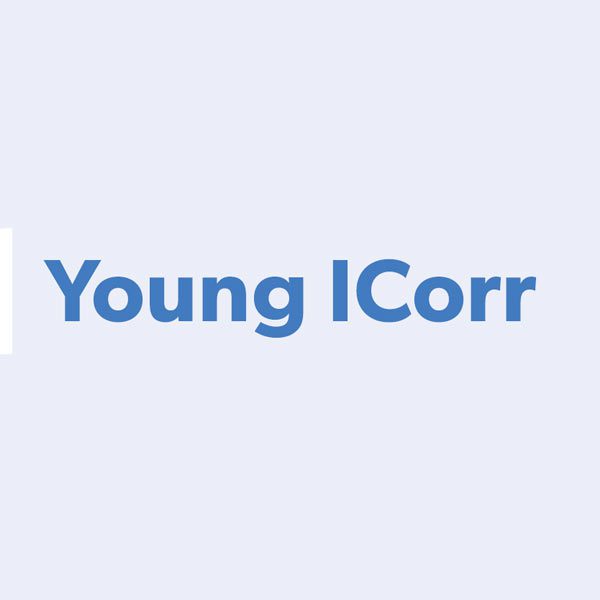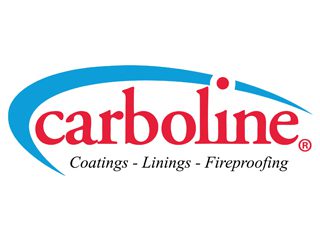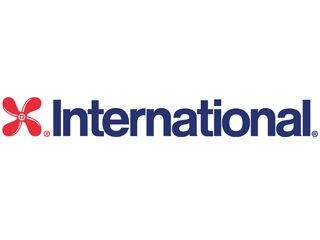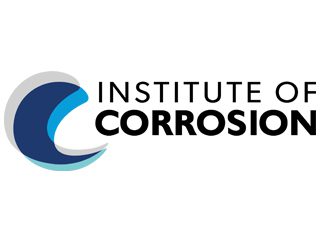
Institute News
Young ICorr joined the London Branch meeting on Thursday 13th October, 2022 for a technical talk and networking session followed by a social late into the evening. The meeting welcomed both ICorr members and non-members. The technical talk featured Dr Anthony Setiadi, FICorr, talking about corrosion protection considerations for offshore wind foundations, a very important topic as the offshore wind industry growth is accelerating with the global shift towards renewable energy sources.
Following the technical talk, Dr Danny Burkle provided a brief insight into the benefits of Young ICorr and the initiatives on offer for our members. Then, there was an opportunity to enjoy some free refreshments whilst networking with like-minded early career corrosion professionals and the more
experienced members.
This evening was a great opportunity for Young ICorr to join members from the largest community of corrosion scientists and engineers in the UK and network
to learn about opportunities they need to develop their career.
To become part of the Young ICorr community, or for more information about what they do, and how they can help you, contact, James McGladdery or Danny Burkle on
James.McGladdery@uknnl.com and d.burkle@lbbcbaskerville.co.uk, respectively.
Institute News
The YEP programme continues well at Aberdeen, with the seventh session, “Introduction to Fitness for Service Assessments” with Pieter Van Der Vyver from Oceaneering being held on 15th September, which was followed by George Winning, on Thursday 6th October 2022 on the topic of “Corrosion aspects of O&G Production Chemistry.”
During July (26/07/22) and August (24/08/22) respectively, there were excellent talks given by Clare Watt of KAEFER on “Corrosion Under Insulation and Fire Protection” and Jim McNab of Oceaneering entitled “Non-Destructive Testing and Corrosion Monitoring.”
The YEP participants are now in the final stages of their Case Study with the date of Thursday 24th November set for the YEP case study competition presentation evening, to be held at Aberdeen Palm Court Hotel. The Case Study set for the participants, who were divided into teams for this, was “Corrosion management of mature offshore platform facilities”, and Steve Paterson – Case Study Leader, gave the following essential information for the teams, so that they can analyse the data and perform a high-level corrosion risk assessment, in order to propose an integrity management plan. Also included in the case study is a subsea tie-back with H2S so that the teams can also do a materials selection for the pipeline and a sour service assessment for the platform facilities. The study is based on an actual N. Sea platform.
Brief: Each YEP team is assumed to have been engaged by an integrity services contractor to advise an international company that is a newcomer to the operation of production facilities in the UK sector of the North Sea. Capercaille Energy, which is an affiliate of Grouse Capital International, is considering the acquisition of an existing platform and associated subsea facilities that have been in operation for 15 years. End of field life is currently estimated to be 2032. There is an 8” subsea pipeline from the oil rim of a near field reservoir and a 10” subsea pipeline from the gas cap. Configuration of the subsea wells and manifolds means that individual well tests are not straightforward. As part of the purchase there is also an opportunity to develop another gas/condensate reservoir 10km from the platform. The reservoir is known to contain up to 50 ppm H2S. Initial studies suggest an 8” pipeline will be installed for the possible initial gas production of 50 MMscf/d. It has already been identified that the existing owner has not managed the integrity of the “Solaire” platform in an optimal way in the past, and there have been several significant corrosion related hydrocarbon leaks in recent years. The teams have also been made aware that inspection has been primarily time-based and many vessels have not been inspected since start of operation. Corrosion management has been the responsibility of a contractor who has not been helpful so far, and administration of the inspection database has been poor. Capercaille Energy is a demanding and sometimes difficult client with high expectations of its contractors. A more innovative approach to corrosion management of the platform is anticipated by the client. Run on shoe-string budget the company does not have the resources to chase the existing owner for anything but essential technical information about the platform and associated facilities. Each team will need to carefully consider what questions are asked to get a sensible and timely response. The integrity services contractor, Bala Integrity, has a habit of playing its sub-contractors off against each other and there may be other companies that have been engaged to provide advice. Each team should present their proposed solution to the management team of Bala Integrity prior to presenting to Capercaille Energy.
Platform details: Solaire is a six-legged steel jacket platform in the Central North Sea positioned in 90 metres of water. Current production is 40,000 bpd oil (API 40), 100 MMscf/d gas and 50,000 bpd produced water. It has two HP three phase sand separators, three further stages of oil/water/gas separation, plus two vertical 1st stage gas separators. There are multiple stages of gas compression, with a (TEG) glycol contactor for gas dehydration, and coolers for export gas.
There are produced water handling facilities for overboard discharge. Oil export (max 2% water) to shore is via a 16” pipeline and dry gas export to a 3rd party pipeline system is via an 18” pipeline. Personnel on board for the platform is limited to 80, which restricts the ability to do non-routine maintenance and inspection.
The exercise involves, 1. Identify what further information or data that you need for the other tasks in the exercise and request from your mentor. 2. Analyse/discuss the information and data that you are provided with. Identify any gaps in information and any assumptions you may need to make. 3. Perform a high-level risk assessment to identify key threats to the mechanical integrity of the pressurised systems (i.e. structural integrity is excluded). 4. Propose a systematic approach to manage the key threats including mitigation measures, corrosion control requirements, performance monitoring, the resources required to manage the process, and any specific strategies needed. 5. Propose materials of construction for a pipeline including welding consumables and any testing requirements to tie-back the new reservoir to the platform and explain the basis for the materials selection and how any corrosion threats will be mitigated. 6. Identify what needs to be done for the existing facilities should the new slightly sour reservoir be produced back to the platform. 7. Propose a strategy for convincing Capercaille Energy that your team’s approach is the optimal solution and that you are the right team to do the job.

Institute News
This ICATS course is designed for managers, engineers, specifiers, and any persons requiring further industrial painting knowledge for their day-to-day role.
It is a one-day course that can be held remotely or face to face in Northampton or Devon, and contains all the information to give anyone a much better understanding of the protective coatings industry.
For more information, please contact Corrosion House on 01604 438222, or Kevin Harold on kevin@paintel.co.uk
Update seminars
Due to the circumstances of recent years, we have not had a 3-year update seminar. Therefore, we will be putting together a remote seminar for you to work through with updated information in the near future. This will update our clients and trainers in an efficient and less costly way.
Institute News
The Institute is delighted to announce that they have developed a Microbiologically Influenced Corrosion (MIC) course to meet the increasing demand from industry
MIC is the least understood phenomenon of corrosion despite the number of high-profile failures it has caused around the world with devastating effect on the health, safety, reliability and finance of operations, company reputation and the environment. It is estimated that 20% of all corrosion failures are primarily due to uncontrolled microbial activities in industrial systems with an estimated annual cost of UDS 2.5 billion to the oil and gas industry alone.
The new, state of the art course provides expert knowledge on the MIC threat assessment, identification methods, monitoring and mitigation technologies. It uses case studies to share best practices to control the spiralling MIC cases in different sectors around the globe. It will be of considerable benefit to managers, project leaders, industrial biologists, engineers, scientists, field management and technical staff.
The course will cover both theoretical and practical aspects of MIC, and is delivered by Dr Tony Rizk, a world-renowned expert with many years of practical experience. It is offered in three formats to meet the demands of the various industries, and at different levels of proficiency as follows:
Awareness Level
A one-day course that provides an overview of the phenomenon of MIC with a focus on understanding and managing MIC. This is targeted at managers and leaders who need to understand the risk but are not MIC practitioners. A certificate of attendance is awarded.
MIC technologist
A four-day course covering theoretical and practical sessions with a focus on providing detailed knowledge on managing and conducting a MIC control programme including setting sampling and monitoring strategies, data interpretation and presentation and identification of potential risks. A certificate of attendance is awarded.
Certified MIC technologist
This is the same as the MIC Technologist course, which is then followed by an additional half day for taking an examination paper.
Currently, the course is only available in a classroom format although an on-line format will be developed in the future, and the fee for one-day course is £800, and for the four-day course is £2,000. For those wishing to take the ICorr certification exam after the four-day course there is an additional fee of £500. These fees are based on attending the course in the UK.
To help us plan the initial availability of this long-awaited, new course we would appreciate feedback or your interest as follows:
The first 1-day Awareness course will be held on 16th November, and the 4-day course on 28th November – 1st December.
To help us plan for future courses, please let us know your interest in these courses, or to hold the course at a location to suit you.
Email: admin@icorr.org
Please send your feedback to:
admin@icorr.org

Institute News
The Institute is very pleased to welcome the latest Corporate Members, Carboline and International Paint Ltd.
Carboline produces high-quality performance coatings, linings and fireproofing products in more than 20 manufacturing facilities around the world. Carboline’s cutting-edge research and development centre reflects its commitment to remaining at the forefront of the protective coatings industry, which is why they are delighted to be associated with the Institute of Corrosion.
———————————————————————————–

AkzoNobel’s International® brand is the world leader in marine, yacht and protective coatings. A long-standing brand synonymous with innovation and collaboration, it is the preferred choice of industry leaders looking for excellence and expertise.
They deliver anticorrosive and fire protection, fouling control technologies and aesthetic solutions for on and offshore. Supported by high quality customer service and in-field support around the globe, their technologically advanced International® product range strives to satisfy their customers’ needs, now and in the future.

Institute News
As stated in the previous issue, the Institute of Corrosion (ICorr) is a charitable institution, dedicated to putting its members at the heart of the global corrosion prevention community and ensuring that all that is done in its name is aligned to its core values of:
• Competency and good leadership.
• Education and innovation.
• Inclusivity and diversity.
• Trust and respect.
• Worldwide participation.
As per the Charities Commission designation – Charity No. 275206, the principal aim of the Institute is to advance the understanding of the science, technology and engineering practice of corrosion control, and to facilitate the exchange of information and ideas for the public benefit. To assist in this goal, ICorr is very fortunate to have many volunteers serving its branches, divisions and committees. The organisational structure is the framework that enables this, and in which many talented and hard-working corrosion professionals help us to
achieve our goals.
The Trustees of the Institute of Corrosion
There are five trustees, and these form the ‘committee’ that oversees the routine running of the Institute between Council meetings. These trustees, who are also directors of ICorr, meet monthly and report back quarterly to Council, which is similar in operation to the Board of Directors of a large company. Neither the Trustees or Council members are paid. The Trustees presently are the following Institute members:
• The President – Dr Bill Hedges, (Appointed: 2019).
• The Vice President – Stephen Tate, (Appointed: 2020).
• The Immediate Past President –
Dr Gareth Hinds, (Appointed: 2016).
• The Honorary Secretary –
Dr Jane Lomas, (Appointed: 2011).
Records and provides continuity and guidance to the administrative proceedings of Trustees.
• The Honorary Treasurer – Dr Anthony (Tony) Collins, (Appointed:1994).
Advises and provides continuity and guidance to the financial proceedings of Trustees.
Becoming a Trustee
There are no defined qualifications to join a charity board, but the most important attribute is passion and willingness to give freely of one’s time, to help others.
Charity law gives trustees a legal responsibility for a given charity. To support this, trustees also have specific duties, which are set out by the Charity Commission and show how trustees should govern their charity and conduct themselves. The main duty of all trustees is to advance the purposes of their charity. This should always be a trustee’s main focus. A trustee must carry out their charity’s purposes for public benefit. This is called ‘the public benefit requirement.’
Trustees’ duties are set out in the Charity Commission guidance on the Essential Trustee (CC3). Reading and understanding this guidance is important for all trustees.
Term of Office
Being a Trustee is a long-term commitment, and in the case of ICorr is typically for a minimum period of 6 years, supporting the President in all key decision-making processes for matters requiring urgent attention. These may include, audits and standards, bursaries and sponsorships, charity commission returns, dispute resolution, growth and sustainability, long-term investments, and personnel changes and HR issues.
Recruitment and Appointment of Trustees
The directors of the Institute are also Trustees for the purposes of charity law and, under the Articles of Association, act as the Executive Management Committee.
Trustees, as members of the management committee, are required to have a broad skills base, and suitable persons (normally working in the field of corrosion) are drawn from industry, private consultancy and academia.
Vacancies are generally filled by approaching individuals who are thought to offer particular skills and/or who are able to maintain the balance of skills available to the management committee. Experience sitting on ICorr Council is obviously beneficial but is not a pre-requisite.
Responsibilities
There are many ongoing responsibilities during a Trustee’s term of office, the key ones being to ensure that:
• All resources are managed responsibly without waste.
• The Charity performs in the best interests of its members and the public at large.
• The Charity remains fully accountable and transparent.
• The operation of the Charity complies with the law, at all times.
• The Trustees act in the Charity’s best interests.
• Trustees act with good care and skill.
A risk register has been established and is updated at least annually and systems or procedures have been established to mitigate identified risks.
The Trustees are also responsible for safeguarding the assets of the charitable company and hence for taking reasonable steps for the prevention and detection of fraud and other irregularities. Each year, under the direction of the incumbent President, the Trustees produce an
annual report.
Under the Companies Act 2006, the Trustees are responsible for maintaining proper accounting records which disclose with reasonable accuracy at any time the financial position of the charitable company.
The Trustees are also required to prepare financial statements for each financial year which give a true and fair view of the state of the affairs of the charitable company as at the balance sheet date, and of its incoming resources and application of resources, including income and expenditure, for the financial year.
In preparing those financial statements, the management committee must follow best practice and:
1. Select suitable accounting policies and then apply them consistently.
2. Make judgements and estimates that are reasonable and prudent; and
3. Prepare the financial statements on a going concern basis.
Trustee Induction and Training
Most Trustees will already be familiar with the operation of the Institute from prior service in a local or regional branch, division or committee. However, after their appointment, new Trustees are given a brief familiarisation session by the current President that is intended to cover:
• Future plans and objectives of the Institute.
• Memorandum and Articles of Association of the Institute:
• Obligations on Trustees in law and as members of the management committee:
• The current financial position as set out in the latest published accounts.
The work of a Trustee is ongoing, sometimes complex but also varied. It is rewarding for the individual concerned, not in a monetary sense, but in knowing that they have helped secure the long-term future of the Institute.


